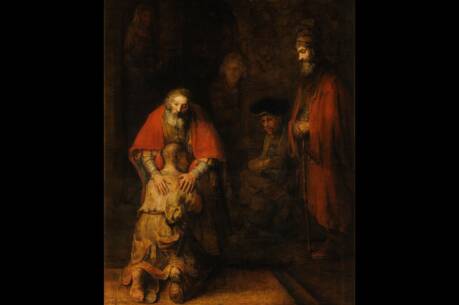Coming to Believe
“Do not be unbelieving but believe” (Jn 20:28)
• What changed Thomas from a doubter into a believer?
• Why is the faith of those who do not see but believe superior?
• Do the Easter event and your baptism shape your life? How?
Today's Gospel passage from John 20 continues the Evangelists account of the genesis of Easter faith among Jesus' closest followers. The story began last Sunday with the discovery of Jesus' empty tomb. Whereas Mary Magdalene thought that Jesus' body had been stolen, the beloved disciple suspected that Jesus may have been raised from the dead. But there was still much confusion and uncertainty about what had happened. The first appearance of the risen Jesus was to Mary Magdalene. Initially she thought that Jesus was the gardener, and only gradually and with Jesus' initiative did she come to recognize the risen Jesus.
In the second appearance, on Easter Sunday afternoon, the disciples in Jerusalem have no trouble recognizing the risen Jesus. He promises them peace, communicates the gift of the Holy Spirit and commissions them to carry on his mission from his heavenly Father. The third Jerusalem appearance takes place the Sunday after Easter. Here the skeptical Thomas demands empirical proof of Jesus' resurrection, and he receives it. When he comes to recognize the figure before him as Jesus raised from the dead, he proclaims him 'my Lord and my God!' the highest confession of Jesus' identity in the New Testament. The path to Easter faith in John 20 moves from despair with a glimmer of hope, through confusion and recognition, and through the gift of the Holy Spirit and the risen Jesus' commission to Thomas's profession of faith.
Luke describes the difference Easter faith made in the lives of Jesus' first followers gathered in Jerusalem in his short (and probably idealized) summary in Acts of early Christian community life in the days after Easter. Their communal life consists of listening to the apostles and witnessing their wonders and signs, pooling their material possessions, sharing meals and meeting together, praising God and winning many converts.
In his final remarks to his disciples on the Sunday after Easter, the risen Jesus differentiates between how Thomas came to believe (because you have seen me) and a more ordinary yet even superior way (Blessed are those who have not seen and have believed). That is the way the early Christians addressed in 1 Peter (and we also) have come to believe in the risen Jesus. The letter known as 1 Peter was written to Gentile Christians in northern Asia Minor (present-day Turkey). They were a minority in that religious and cultural setting and needed to be instructed on their new identity as Christians and what difference their baptism might make in their lives.
Today's selection from the opening benediction in 1 Peter reflects on the identity of those who have come to believe in the risen Jesus without having seen him physically. Three images are prominent: new birth, inheritance and gold tested by fire. All of us know something about the process of birth. But in baptism believers experience a new, spiritual birth. Through God's mercy they have been granted a birth from above, and this birth has as its object and goal a living hope. Because of this new birth in Christ, they have become God's children in a special way alongside Christ. And so Christians can share in the inheritance that comes through faith and baptism. This inheritance is not what we might get from parents or a rich aunt. It is imperishable (not subject to corruption or death), undefiled (it cannot be spoiled) and unfading (not subject to erosion or wear).
The cross remains part of coming to believe. And so Peter describes suffering as a test or discipline with the familiar biblical image of gold tested by fire. In order for gold to be purified and made stronger and to show forth its brilliance, it must be subjected to fire. Similarly, the faith Christians display amid persecution and other tests makes them more precious than gold.
This article also appeared in print, under the headline “Coming to Believe,” in the March 24, 2008, issue.








